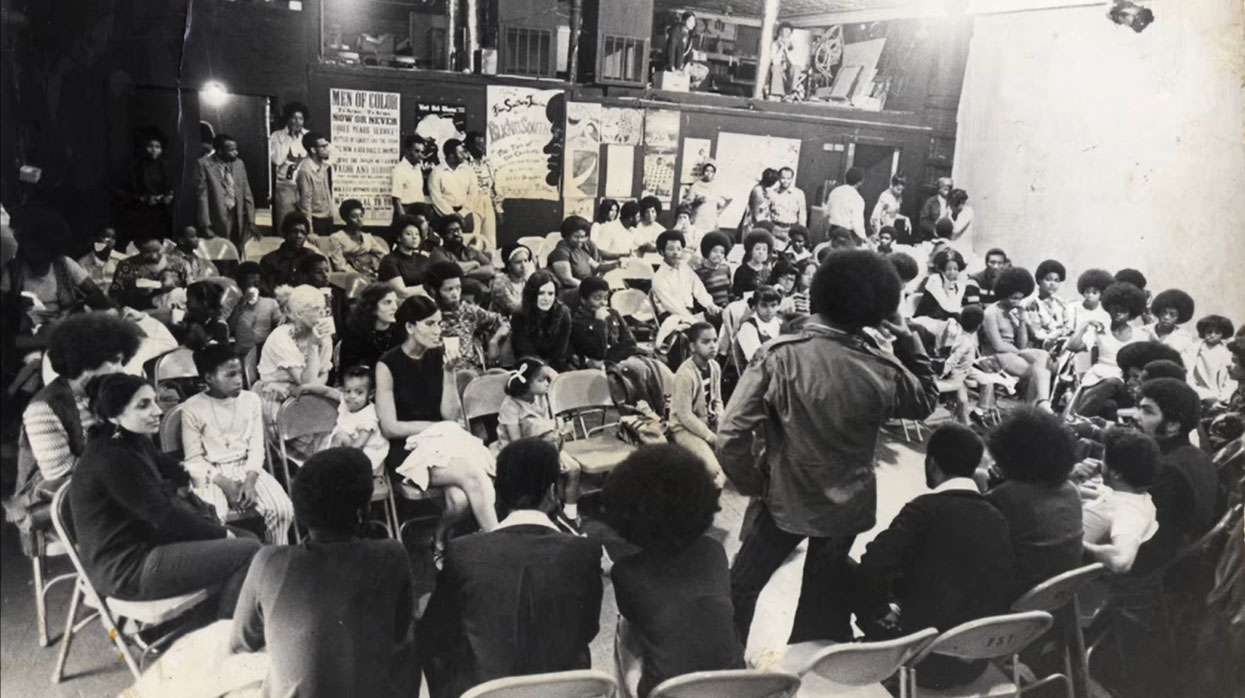The Establishment of a Free Southern Theater
Art and Activism
The Free Southern Theater was explicitly a theater by and for the people. As stated in A Proposal for a Free Southern Theater, “Our fundamental objective is to stimulate the critical, creative, and reflective thought necessary for effective participation in a democratic society.” The Proposal cited “participants from the local Negro communities” as the first priority for the company and the Prospectus envisioned the success of their program “to include all levels of community participation not only in the dramatic art but also in the art forms associated with drama – music, dance, and painting.” Fundamentally, their practice reflected the change they sought to bring about in Mississippi.

A community dialog facilitated by Free Southern Theater at their New Orleans theater. A Free Southern Theater: Black Arts South poster is visible in the middle of the back wall. photo from the archives of Junebug Productions
In her book Emergent Strategy, adrienne marie brown uses the analogy of fractals to describe the movement principle which relates what organizers do at small scales to the patterns which then repeat at larger scales. As a simple maxim, brown reminds us that, “What we practice at the small scale sets the patterns for the whole system.” In this way, as the Free Southern Theater insisted that “A Free Southern Theater can demonstrate that the present reality can be altered and transformed, and that the Negro must play the leading role in that transformation,” they were not only claiming this as the outcome they sought, but through their practice they cultivated leadership in the work by local Black community members as an affirmation which set the larger goal in motion.
Community-based artwork which involves untrained artists in the production of the work can however create a dissonance in the evaluation of the product by aesthetic means. Artists who work with community members have perennially struggled to achieve recognition among critics and historians whose focus on the locus of “artistic genius” is frustrated by the inclusion of untrained collaborators. John O’Neal speaks of this tension among the company members in a letter written toward the end of 1964 while on tour:

Letter to Mary Felice Lovelace from John O’Neal written on November 21, 1964 in which he speaks to the tension among the theater company between whether they are a “Theater theater” or a “social theater”.
This question of “Theater theater” is one of being accepted by the “capital A” Art World. As he articulates here, for John the social responsibility - the social function - is essential to the attainment of the greatest art. While the question may have tugged at the minds of the theater company in the 1960’s, their sustained activity through the dissolution of the company in 1980 certainly speaks to a level of success that few theater companies enjoy.
daniel@significantdevelopments.us — Jackson, Mississippi